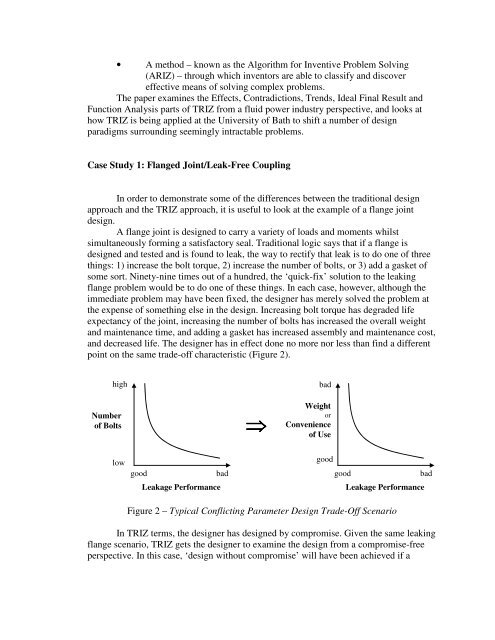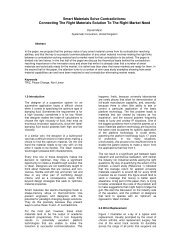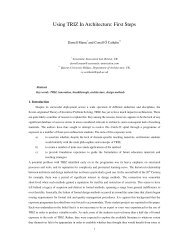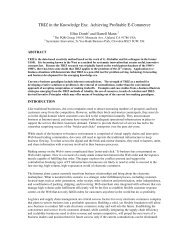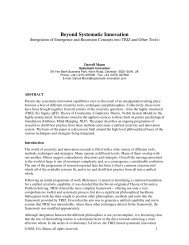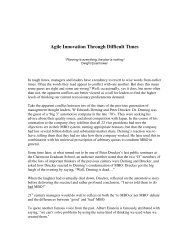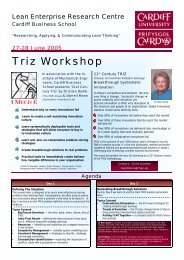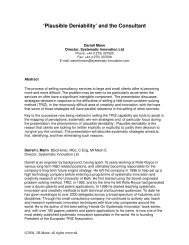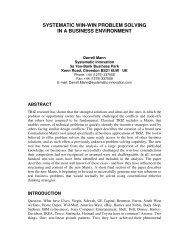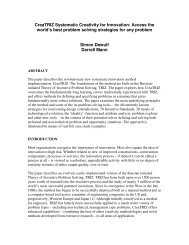TRIZ-Based Root Cause Failure Analysis For Hydraulic Systems
TRIZ-Based Root Cause Failure Analysis For Hydraulic Systems
TRIZ-Based Root Cause Failure Analysis For Hydraulic Systems
Create successful ePaper yourself
Turn your PDF publications into a flip-book with our unique Google optimized e-Paper software.
• A method – known as the Algorithm for Inventive Problem Solving<br />
(ARIZ) – through which inventors are able to classify and discover<br />
effective means of solving complex problems.<br />
The paper examines the Effects, Contradictions, Trends, Ideal Final Result and<br />
Function <strong>Analysis</strong> parts of <strong>TRIZ</strong> from a fluid power industry perspective, and looks at<br />
how <strong>TRIZ</strong> is being applied at the University of Bath to shift a number of design<br />
paradigms surrounding seemingly intractable problems.<br />
Case Study 1: Flanged Joint/Leak-Free Coupling<br />
In order to demonstrate some of the differences between the traditional design<br />
approach and the <strong>TRIZ</strong> approach, it is useful to look at the example of a flange joint<br />
design.<br />
A flange joint is designed to carry a variety of loads and moments whilst<br />
simultaneously forming a satisfactory seal. Traditional logic says that if a flange is<br />
designed and tested and is found to leak, the way to rectify that leak is to do one of three<br />
things: 1) increase the bolt torque, 2) increase the number of bolts, or 3) add a gasket of<br />
some sort. Ninety-nine times out of a hundred, the ‘quick-fix’ solution to the leaking<br />
flange problem would be to do one of these things. In each case, however, although the<br />
immediate problem may have been fixed, the designer has merely solved the problem at<br />
the expense of something else in the design. Increasing bolt torque has degraded life<br />
expectancy of the joint, increasing the number of bolts has increased the overall weight<br />
and maintenance time, and adding a gasket has increased assembly and maintenance cost,<br />
and decreased life. The designer has in effect done no more nor less than find a different<br />
point on the same trade-off characteristic (Figure 2).<br />
high<br />
Number<br />
of Bolts<br />
⇒<br />
bad<br />
Weight<br />
or<br />
Convenience<br />
of Use<br />
low<br />
good<br />
Leakage Performance<br />
bad<br />
good<br />
good<br />
bad<br />
Leakage Performance<br />
Figure 2 – Typical Conflicting Parameter Design Trade-Off Scenario<br />
In <strong>TRIZ</strong> terms, the designer has designed by compromise. Given the same leaking<br />
flange scenario, <strong>TRIZ</strong> gets the designer to examine the design from a compromise-free<br />
perspective. In this case, ‘design without compromise’ will have been achieved if a


